When you creatively tweak vocals, they can completely transform a track.
They can bring forth emotion, add that unique element, and instantly captivate listeners.
So, as a music producer, it’s key to master the art of vocal compression.
This way, it will ensure your vocals are consistently powerful, clear, and dynamically balanced within the mix.
In today’s article, we’ll be breaking down:
- What vocal compression is ✓
- The importance of dynamic control ✓
- Vocal compression settings ✓
- Advanced vocal compression techniques ✓
- Multiband compression application ✓
- Compressing different vocal elements ✓
- Creative uses of vocal compression ✓
- Fine-tuning attack and release times ✓
- Mixing vocals with compression ✓
- Much more about creative vocal compression ✓
You’ll be able to manipulate the dynamics of your vocal tracks with precision, ensuring they shine in the mix and connect with your listeners.
Mastering vocal compression will not only elevate your production quality but also help you create tracks that meet industry standards.
Table of Contents
- What is Vocal Compression?
- Breaking Down Vocal Compression Settings
- The Role of Attack and Release Settings
- Making Sense of Ratio, Threshold, and Makeup Gain
- Advanced Techniques in Vocal Compression
- The Importance of Tonal Compression
- Applying Multiband Compression on Your Vocals
- Aggressive Compression vs Subtle Compression (Edgy/Natural)
- Mixing Vocals 101
- How To Apply Vocal Compression: Final Thoughts
What is Vocal Compression?
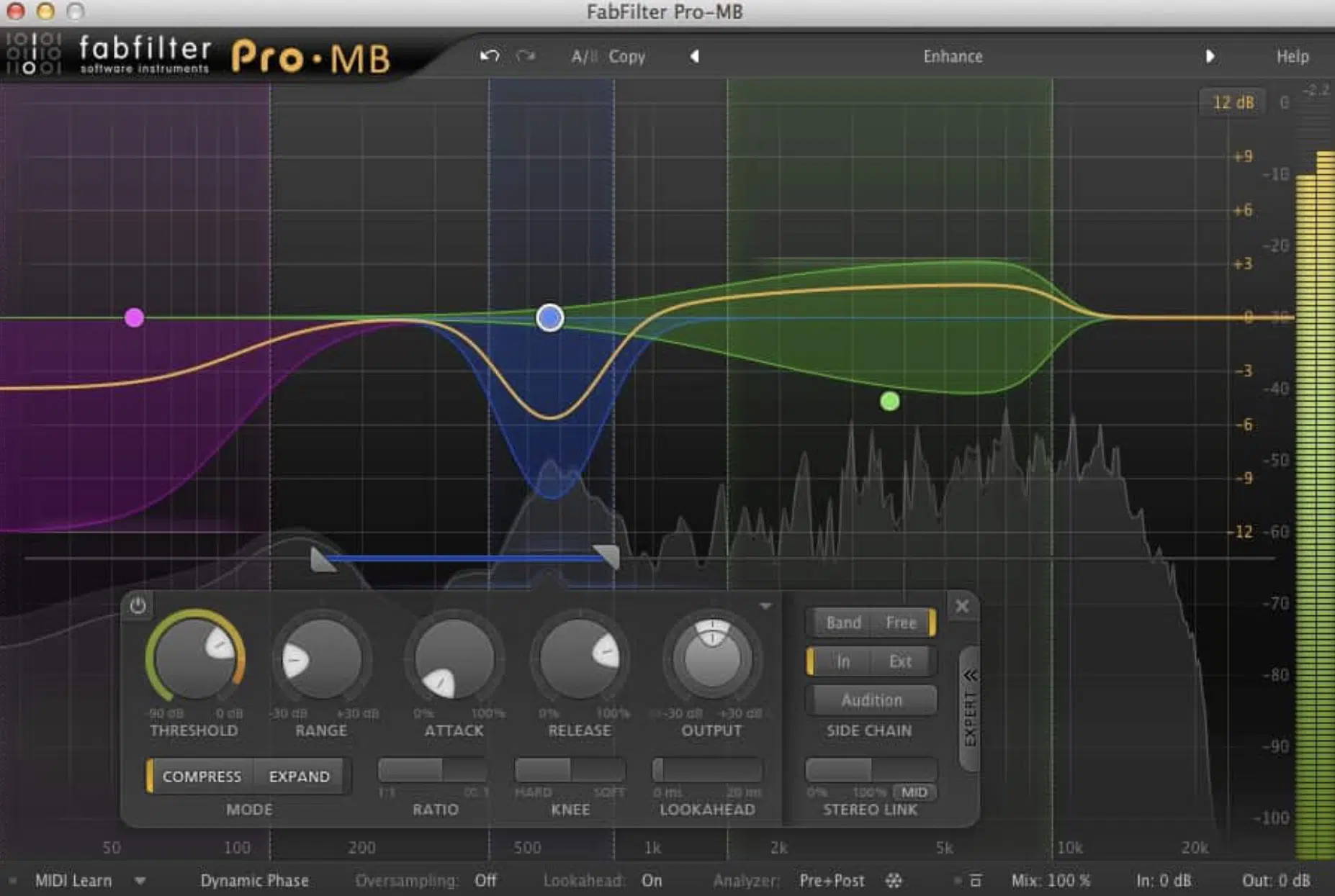
Vocal compression is essential for achieving a polished and professional sound in your tracks, which is what it’s all about.
It works by evening out the dynamic range of a vocal track, ensuring that the quieter parts are audible while preventing the louder sections from overpowering the mix.
This not only makes the vocals sound more consistent but also helps them sit well in the overall mix.
By applying vocal compression, you can enhance the clarity and presence of the vocals 一 making them stand out even in a dense arrangement.
Dynamic control (a key aspect of vocal compression) refers to the process of managing the variability in loudness across a vocal performance.
Effective dynamic control is crucial for maintaining the listener’s focus on the vocal’s emotional and lyrical content without being distracted by abrupt changes in volume.
This is where the magic of vocal compression truly shines, as it allows for the smoothing out of these dynamic swings.
It provides a more cohesive, immersive listening experience.
Breaking Down Vocal Compression Settings
Tweaking vocal compression settings can initially seem daunting due to the variety of parameters available. However, understanding the role of each setting is the key to unlocking the full potential of vocal compression in your mixes, so let’s get into it.
The Role of Attack and Release Settings
The attack and release settings on a vocal compressor are critical for shaping the dynamics of the vocal track.
-
Attack Time
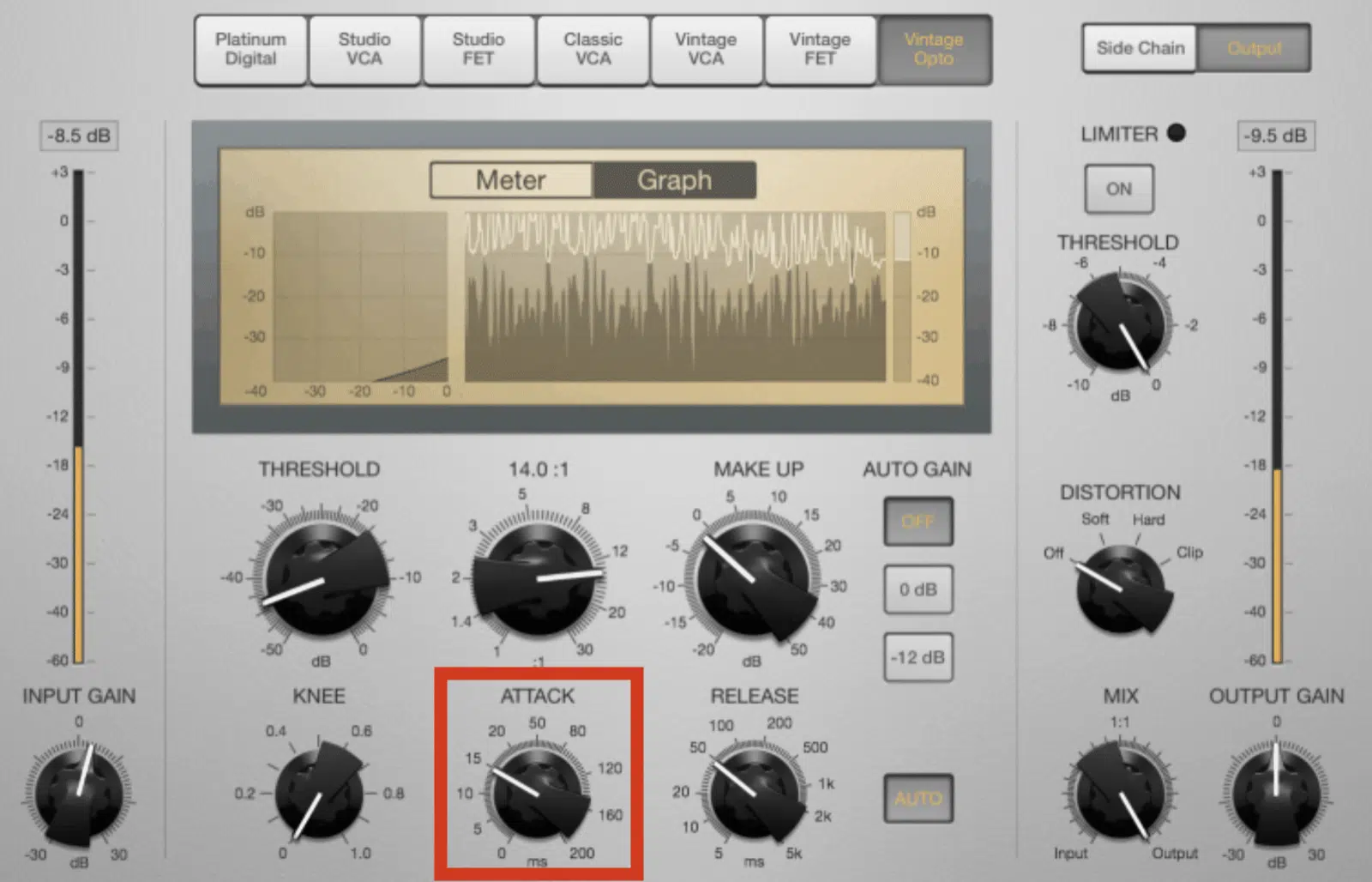
The attack time determines how quickly the compressor starts to reduce the gain after the input signal exceeds the threshold.
- A fast attack time 一 Useful for taming sudden peaks.
- A slow attack 一 Allows more of the vocal’s natural transient to pass through before compression occurs, preserving its natural punch and clarity.
So, when you’re deciding between a fast attack and a slow one, just make sure to consider the overall goal.
-
Release Time
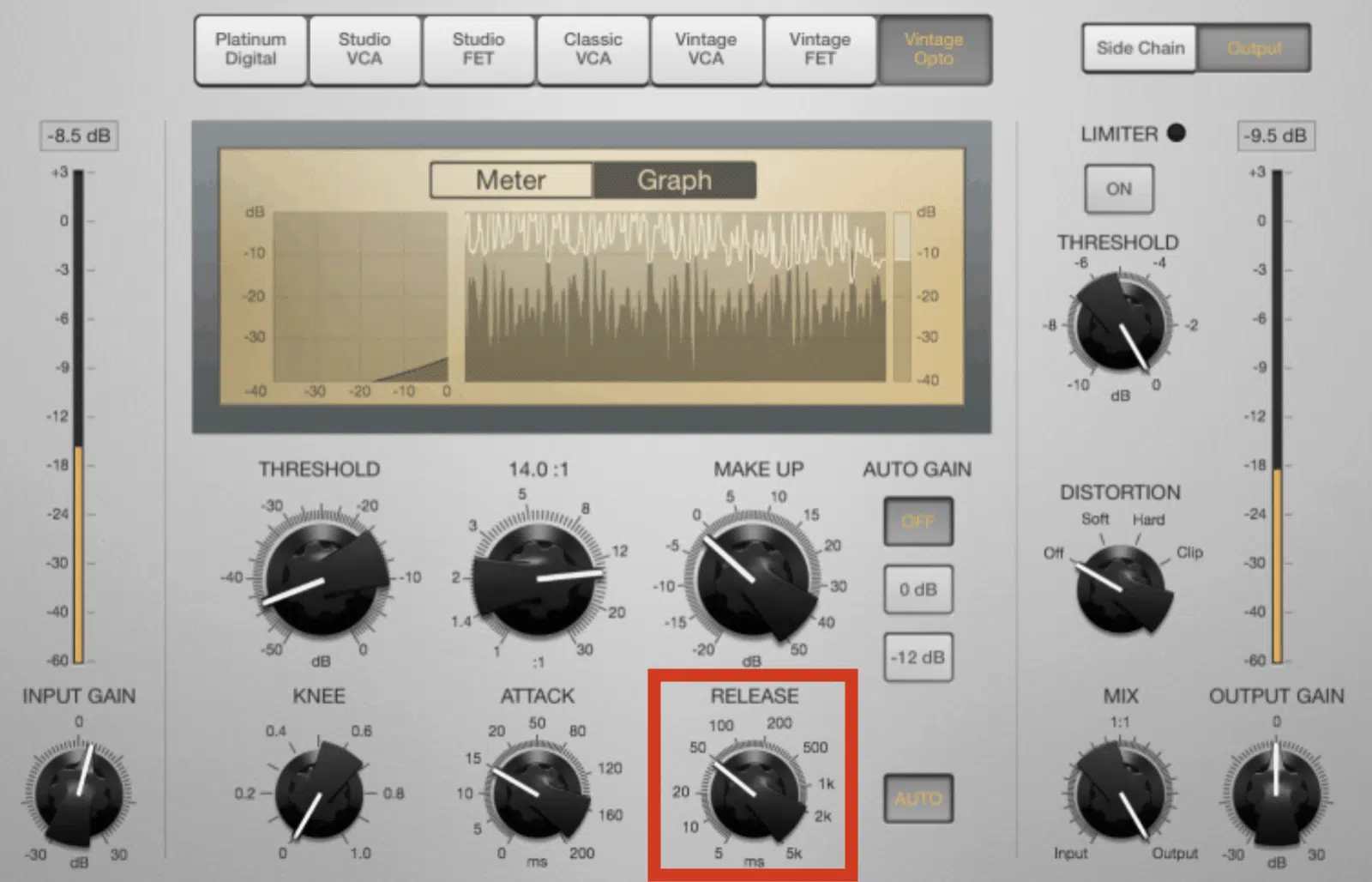
Release time, on the other hand, dictates how quickly the compressor stops acting after the input signal falls below the threshold.
A shorter release time can make the compression less noticeable, as it allows the compressor to quickly return to its inactive state.
However, setting the release time too short can lead to a pumping effect, which might be undesirable in most vocal contexts.
Finding the right balance between attack and release times is essential for achieving a natural-sounding vocal performance that still benefits from dynamic control.
Note
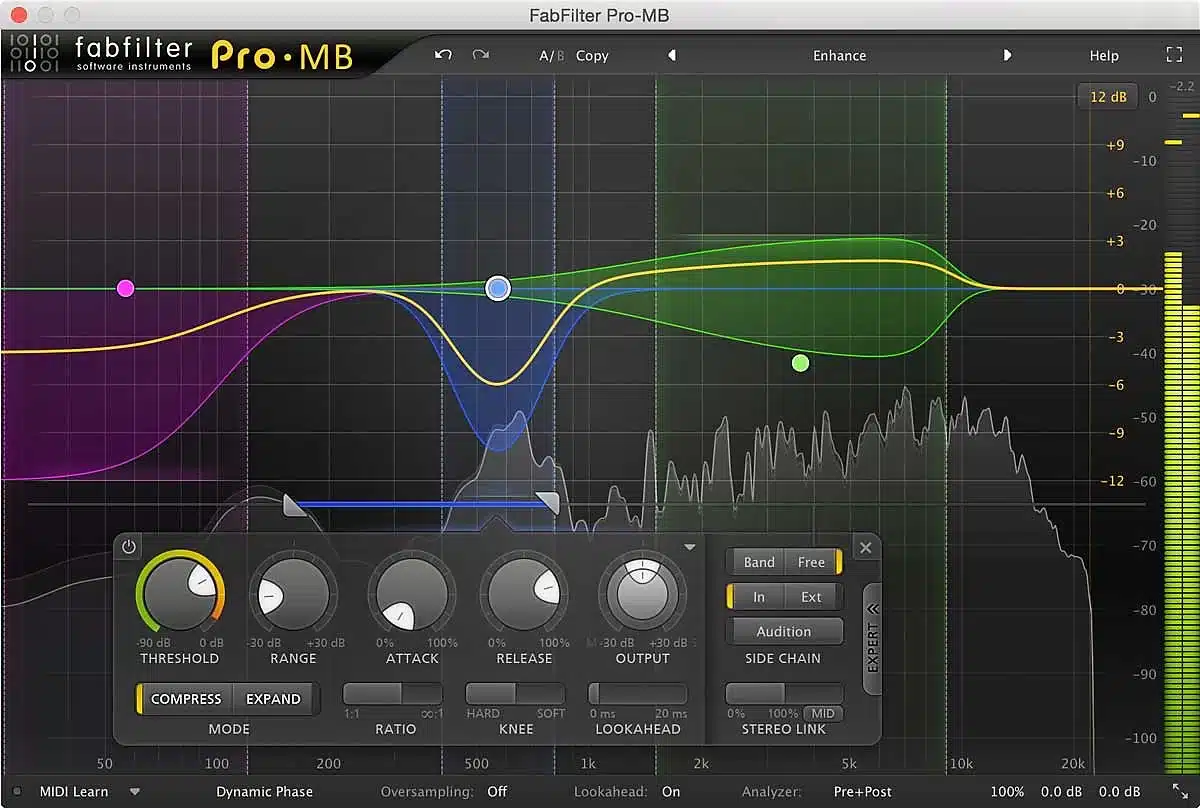
Experimenting with different combinations of attack (attack time) and release (release time) settings can significantly impact the tonal and dynamic qualities of the vocal track.
For example, a slower attack time paired with a medium release time can offer a more natural sound.
It’s ideal for genres where the authenticity of the vocal performance is paramount (whether it’s hip-hop, rock, trap, etc.).
Conversely, aggressive genres might benefit from a faster attack to ensure that every word cuts through the mix, even during the most dynamic passages.
-
Gain Reduction: The Heart of Compression
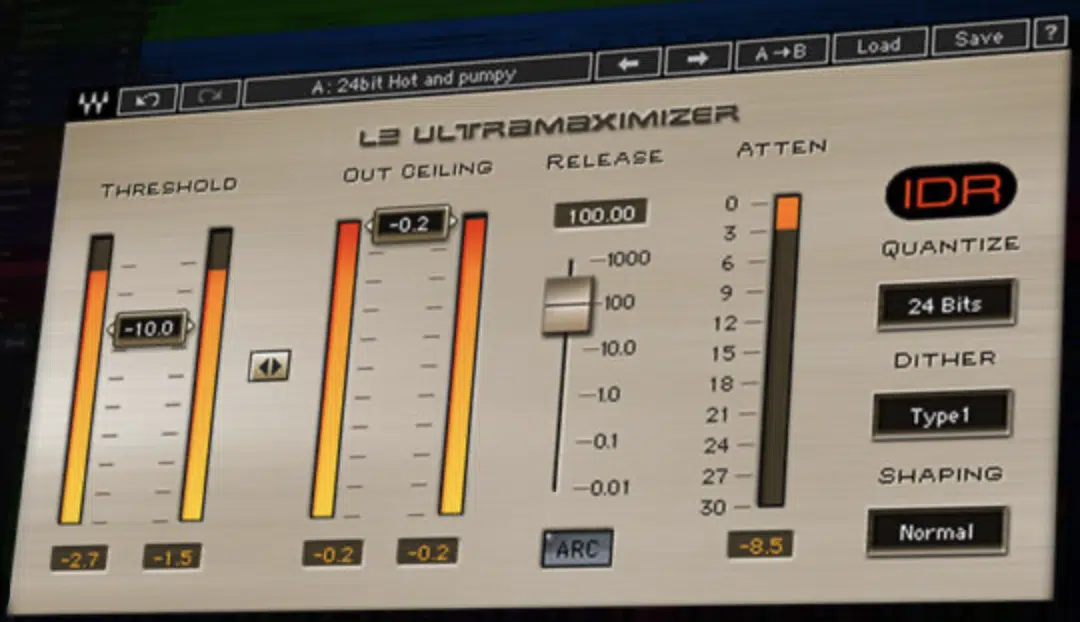
Gain reduction is the essence of what makes compression work.
It refers to the amount of dB by which the signal is reduced once it crosses the threshold set on the compressor (e.g., 3 to 6 dB of gain reduction).
This parameter is crucial for controlling the dynamic range of the vocal track 一 ensuring that the volume stays consistent throughout the performance.
Monitoring the gain reduction meter can provide immediate feedback on how much compression is being applied.
It helps with real-time adjustments to achieve the desired vocal effect.
The amount of gain reduction needed varies depending on the vocal performance and the genre of music.
For instance:
- A ballad with a wide dynamic range 一 Might require more subtle compression to retain the emotional intensity of the performance.
- A pop track 一 Might benefit from heavier compression to ensure the vocals cut through a dense mix.
The key is to apply enough compression to achieve a balanced and consistent sound without squashing the life out of the performance.
You want everything to be super fluid and not overpowering.
Pro Tip
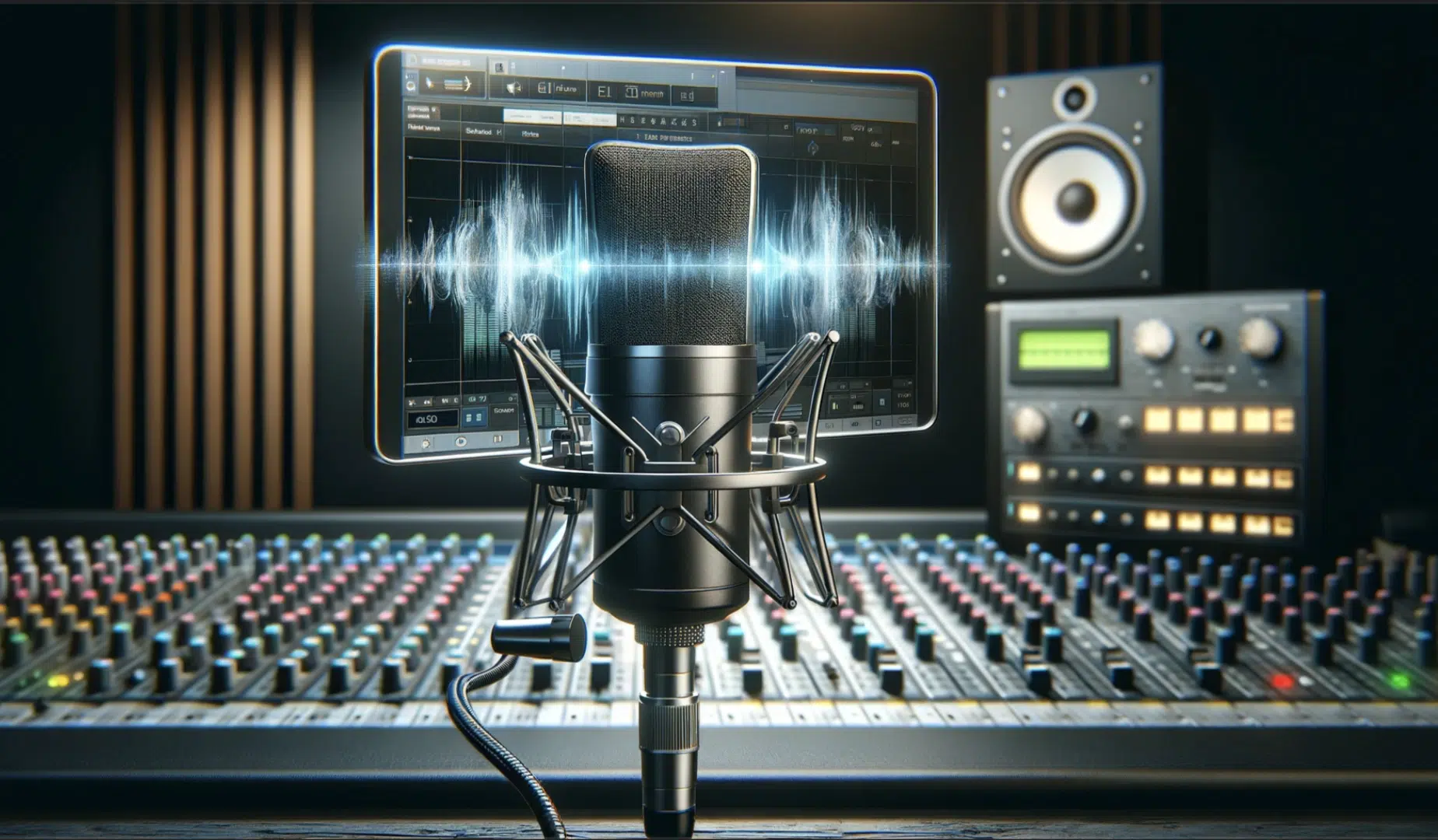
Aiming for 3 to 6 dB of gain reduction during the loudest parts of the performance is a good starting point for most scenarios.
However, it’s important to use your ears and adjust based on the specific needs of the track.
Sometimes, more drastic gain reduction is necessary to achieve a certain sound or to make the vocals stand out in a particularly busy mix.
Making Sense of Ratio, Threshold, and Makeup Gain
If you’re going to master vocal compression, you’ll need to be very familiar with ratio, threshold, and makeup gain. So, let’s break it down so you can get to compressing vocals and make sure your vocal hits right just as you intend.
-
Ratio
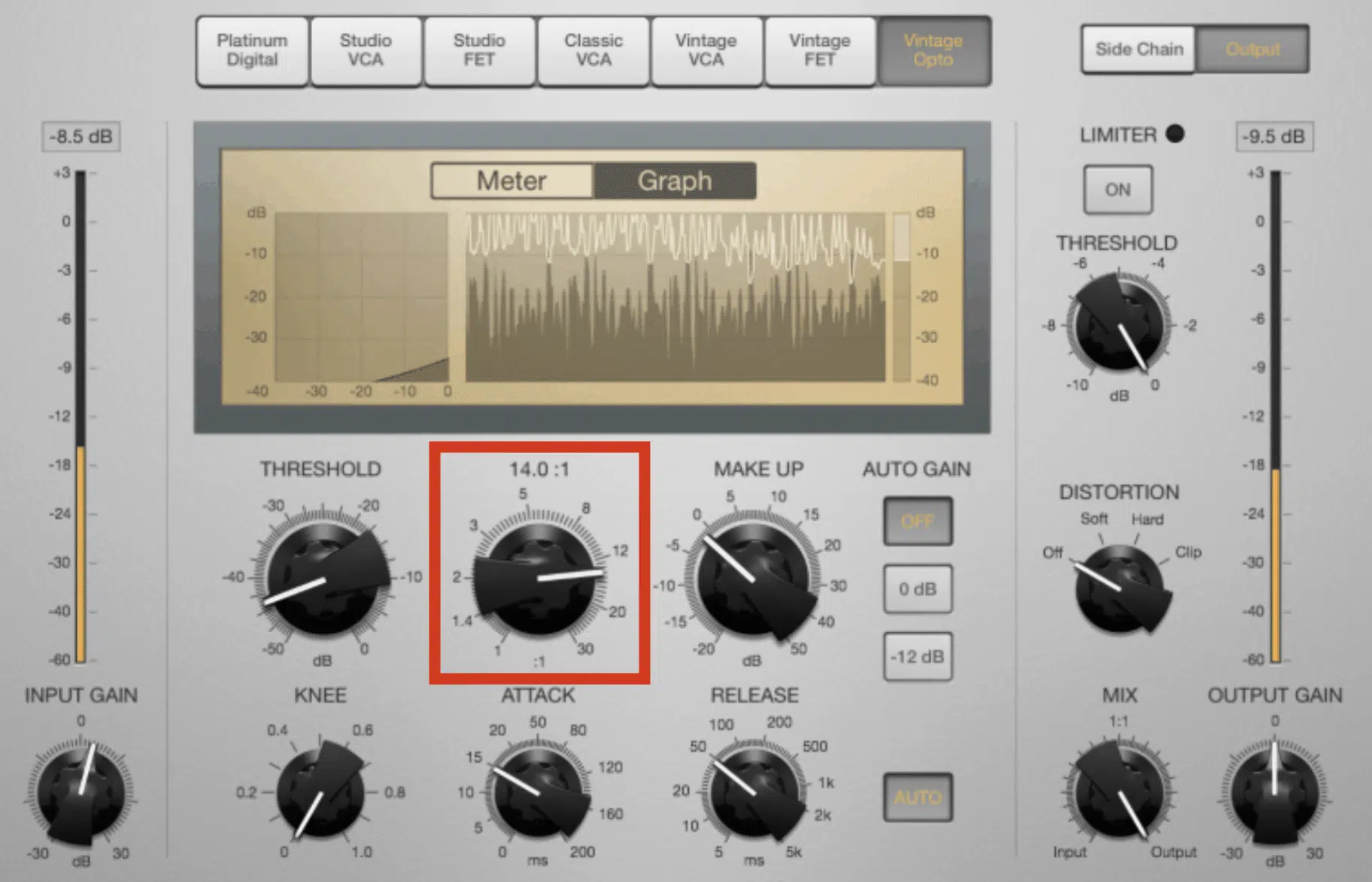
The ratio setting on a vocal compressor determines the intensity of the compression applied once the input signal exceeds the threshold.
A higher ratio means more compression, which can be useful for controlling dynamic vocal performances or achieving a specific sound.
For example, a ratio of 4:1 is considered moderate compression, suitable for most vocal applications.
Conversely, a ratio of 8:1 (or higher) might be used for more aggressive compression needs.
-
Threshold
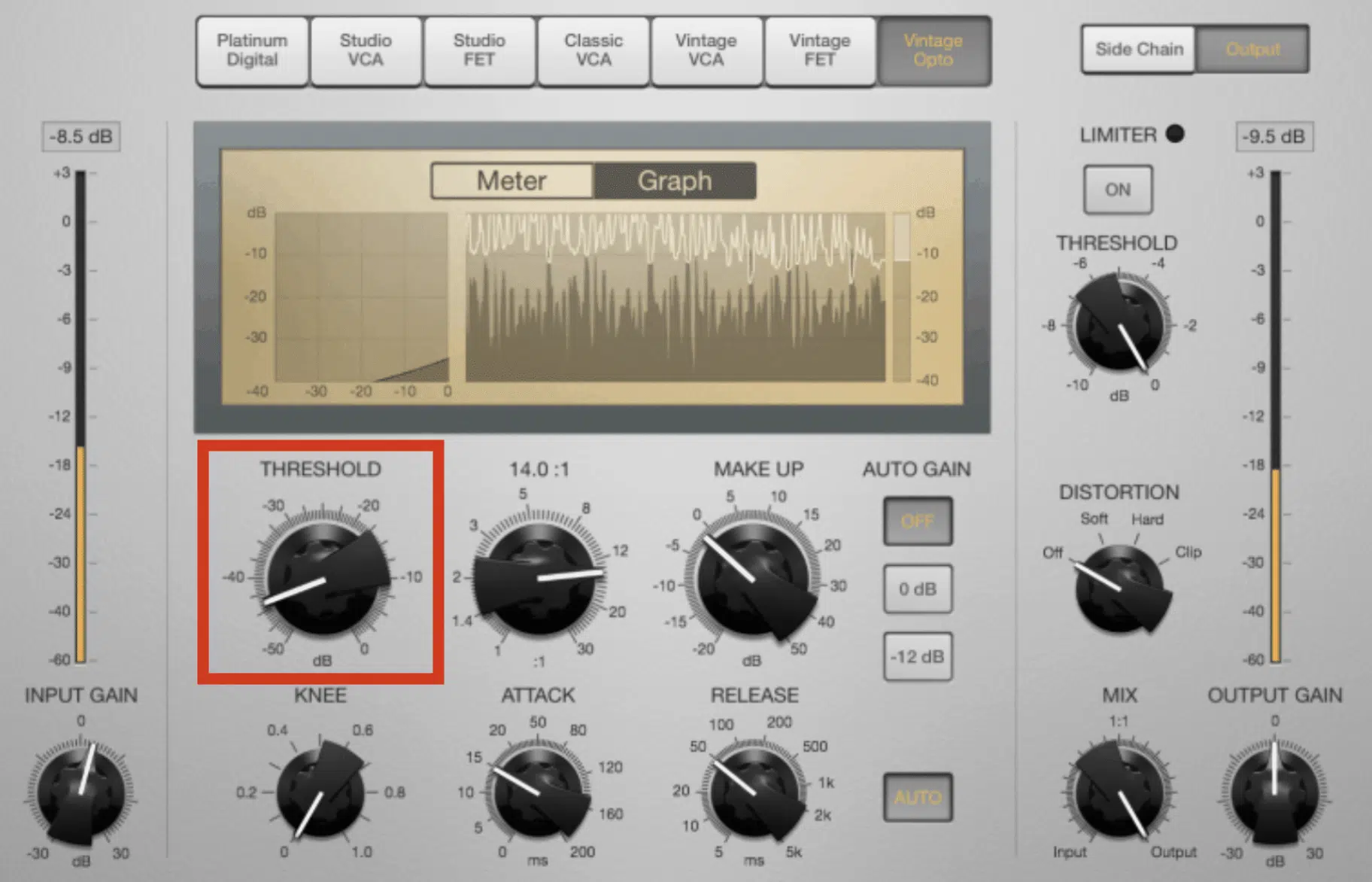
The threshold setting controls at what level the compression will start to take effect, whether it’s a higher threshold or a lower one).
Setting the threshold too low can result in overcompression 一 it will make your vocals sound unnatural and lifeless.
On the other hand, setting it too high (higher threshold) might render the compression ineffective, leaving the dynamic range untamed and sloppy.
The ideal threshold setting depends on the level of the vocal track and the desired amount of compression.
For instance, adjusting the threshold so that it engages during the louder parts of the performance can help maintain a consistent volume without affecting the quieter, more intricate sections.
Side note, if you’re wondering the difference between limiting and compression, we’ve got you covered.
-
Makeup Gain
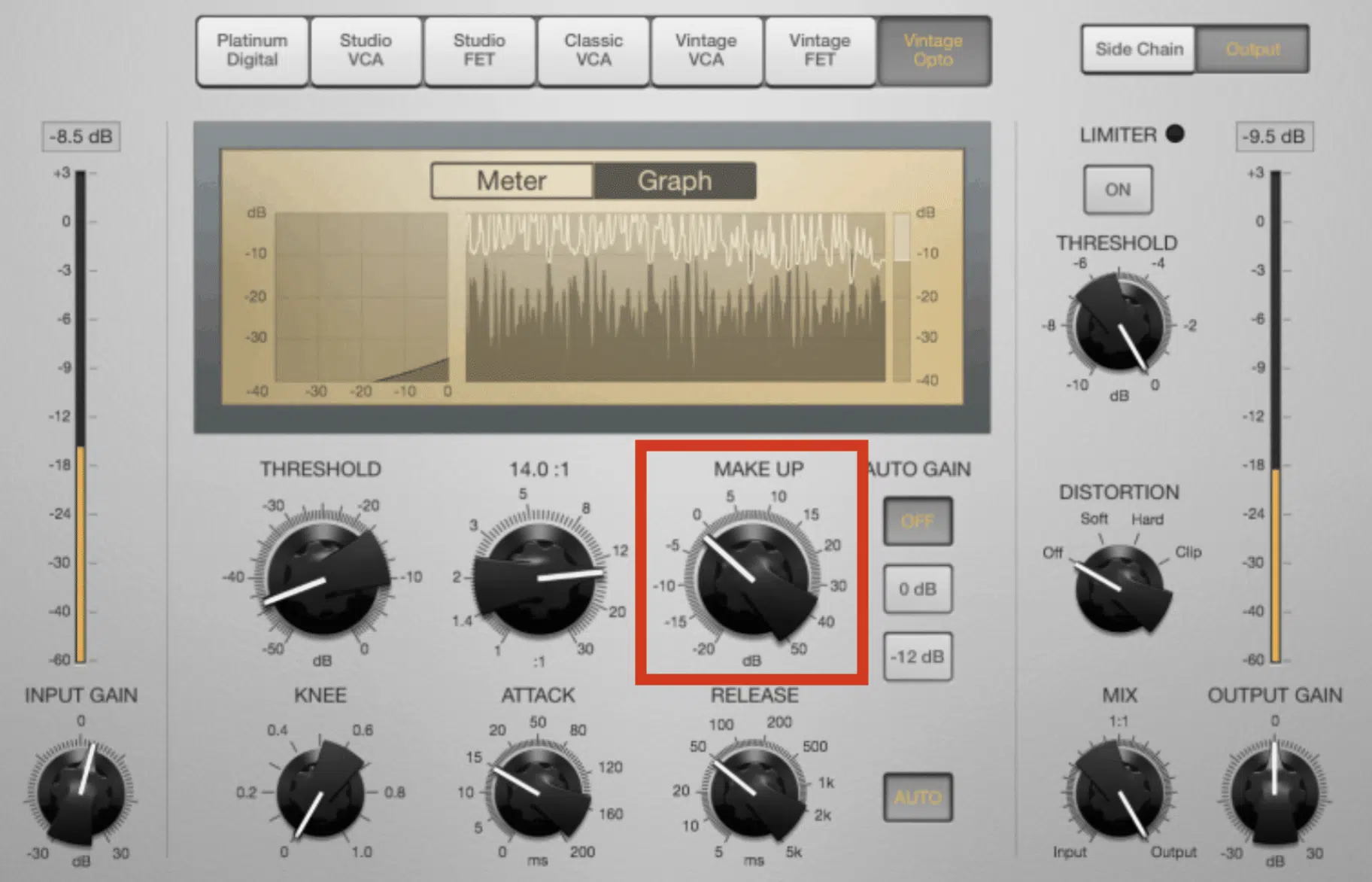
Makeup gain is then used to compensate for the volume reduction caused by how much gain reduction is implemented.
After compressing a vocal track, it might appear quieter in the mix due to the leveling of its dynamic range.
By applying makeup gain, you restore the vocal’s presence, ensuring it remains prominent in the mixing process.
It’s crucial to adjust the makeup gain carefully:
- Too much 一 Can lead to a signal that’s too loud and possibly clipping.
- Too little 一 Might leave the vocals sitting too far back in the mix.
A balanced approach ensures that the modern vocals are both clear and dynamically consistent with the rest of the track.
For example, after applying a moderate amount of compression with a ratio of 4:1 and achieving an average of 5 dB of gain reduction on a powerful vocal performance, you might find that adding around 5 dB of makeup gain brings the vocals back to their original perceived loudness.
Only now, with added clarity and consistency.
Advanced Techniques in Vocal Compression
Now that we’ve covered the basics, let’s break down some more advanced techniques that can further enhance vocal tracks. These techniques, including parallel compression and the use of multiple compressors (more than one compressor), offer amazing control over the dynamic and tonal qualities of vocals.
-
Parallel Compression for Dynamic Richness
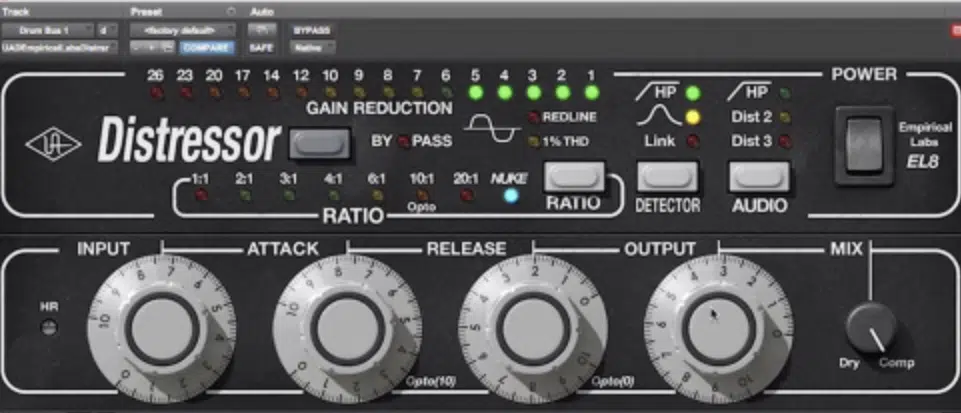
Parallel compression, also known as New York compression, involves blending an uncompressed signal with a heavily compressed version of the same signal.
Parallel compression allows for the retention of the natural dynamics of the vocal track while still benefiting from the intensity and presence that heavy compression brings.
For instance, by sending the entire vocal track to an auxiliary channel and applying aggressive compression with high gain reduction (e.g., 10 dB of gain reduction or more), then mixing this back in with the original signal, you can achieve a vocal sound that is both powerful and dynamic.
NOTE: It’s perfect for show-stopping vocals that need to stand out in a busy mix without losing their natural expressiveness.
The key is carefully adjusting the blend between the dry and compressed signals.
Because, again, it’s all about that perfect balance.
Too much compression in the mix can overpower the natural dynamics, while too little may not provide the desired level of impact.
Experimenting with different levels of parallel compression can reveal the perfect balance for each specific track/project.
It enhances the vocal’s presence without compromising its dynamic integrity.
-
Utilizing Multiple Compressors for Depth
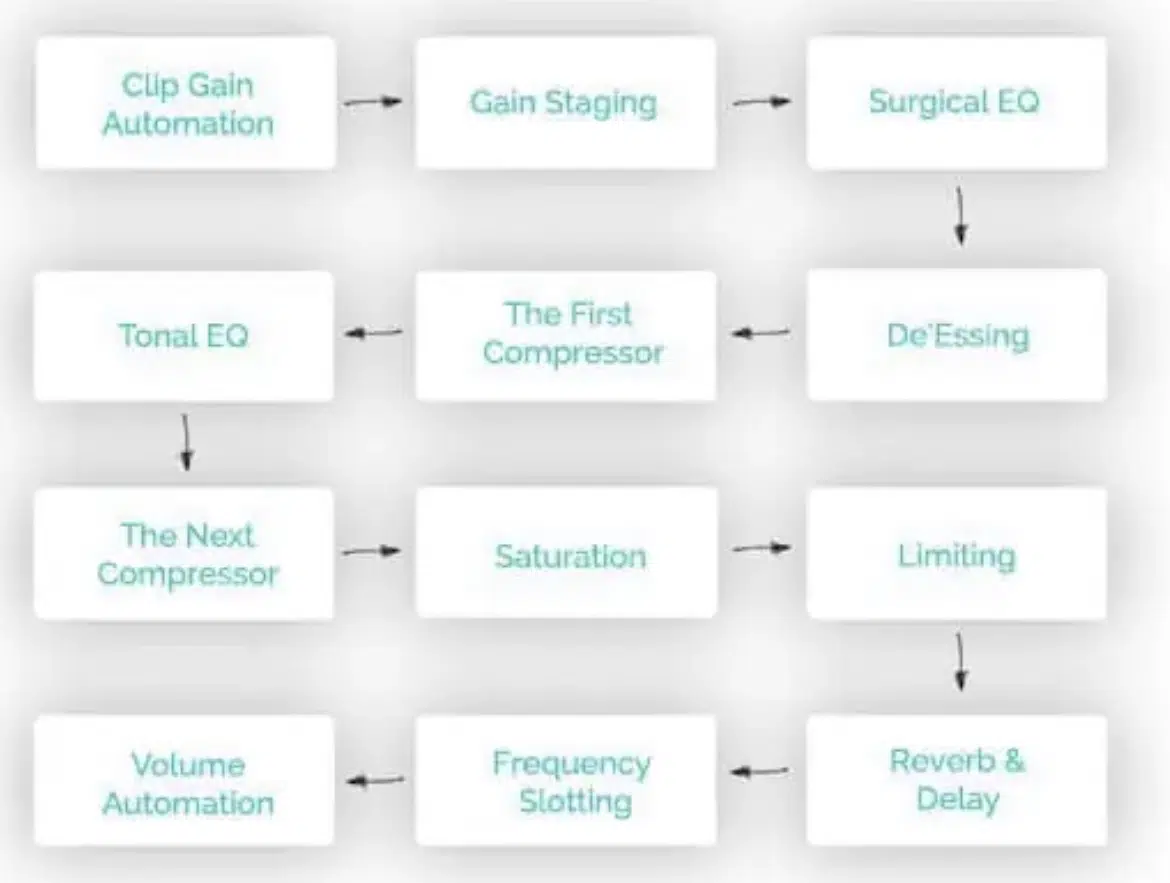
When you compress vocals using multiple compressors in series (serial compression), it offers a method for applying different types of compression at various stages of the signal chain.
For example, when you’re compressing vocals using more than one compressor:
- The first compressor might have a slow attack and release setting to gently smooth out the overall dynamic range.
- The next compressor could be set with a fast attack to catch and tame any remaining peaks.
This layered approach allows for more precise dynamic control and can add depth and character to the vocal track 一 helping to move the vocal forward intriguingly.
Each compressor in the chain can be thought of as performing a specific role, from subtle tonal shaping to more pronounced dynamic reduction.
This technique also enables the use of different compressor types (e.g., different compressor types like VCA, Opto, FET) to impart varying tonal characteristics.
It’s a powerful tool for crafting a unique vocal sound that can cut through any mix.
The Importance of Tonal Compression
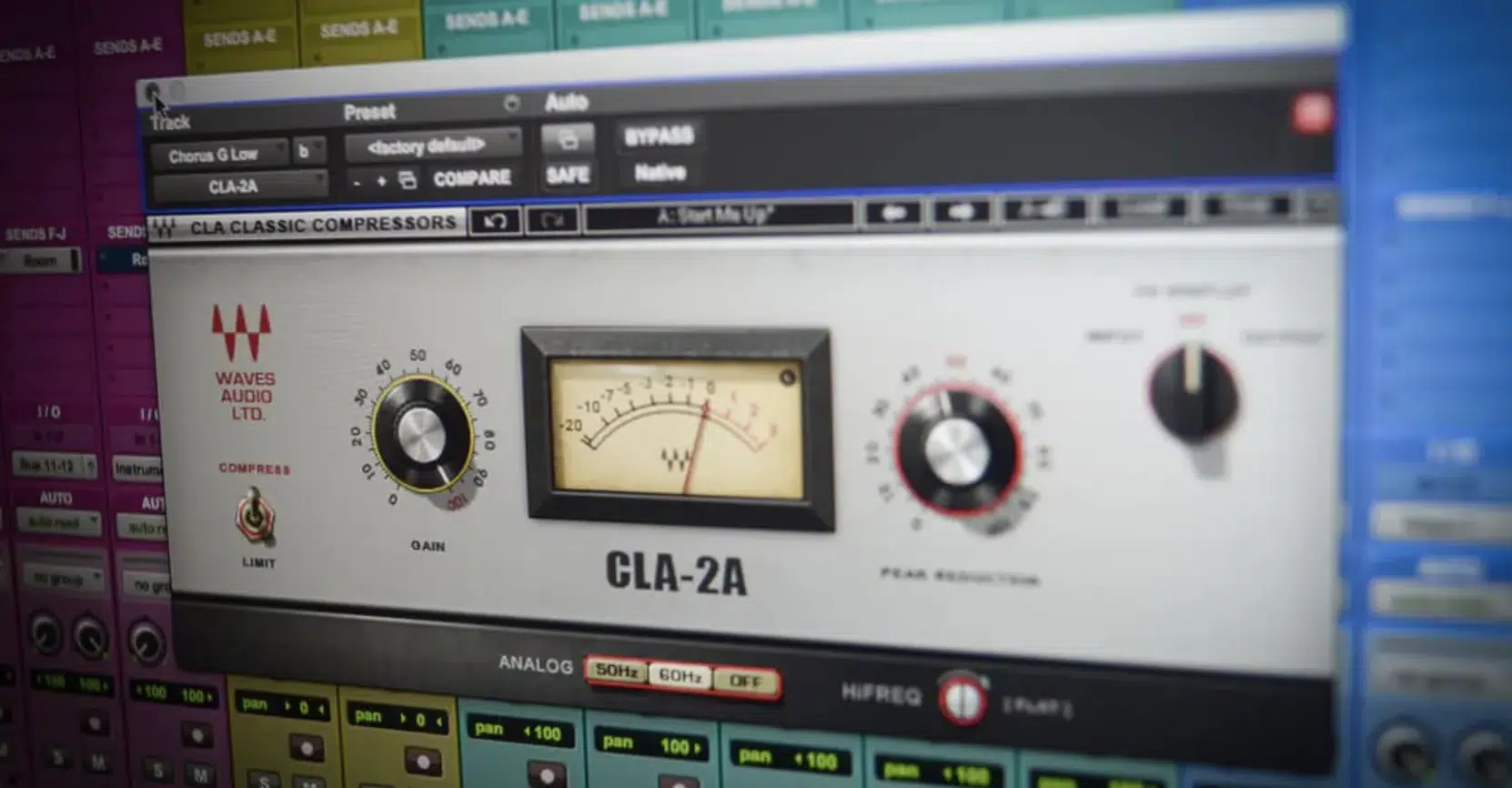
While usually we compress to control a signal’s dynamic range, referred to as “dynamic compression,” more often than not, tonal compression is really what you’re after.
It involves the subtle manipulation of a signal’s tone and texture, rather than merely its volume levels like dynamic compression.
This nuanced approach is why an engineer might prefer one compressor style over another for specific tasks, and why analog emulations are so crucial to the modern producer.
The tonal qualities imparted by these emulations on a signal enrich the sound in a way that goes beyond mere volume adjustment.
Mastering tonal compression is a refined practice, requiring years of ear training to appreciate and effectively apply the subtle tonal shifts it can introduce.
For vocals, tonal compression is particularly transformative.
It’s capable of enhancing the warmth, clarity, and presence of the vocal track.
This process is not just about leveling dynamics but shaping the vocal’s sound to fit perfectly within the context of the mix.
NOTE
The choice of compressor is paramount, as different models offer unique characteristics that can significantly affect the vocal tone.
Whether it’s adding a lush quality with an optical compressor or enriching the midrange with a tube model, tonal compression breathes life into vocals.
It makes them resonate with a distinct, musically pleasing character.
Applying Multiband Compression on Your Vocals
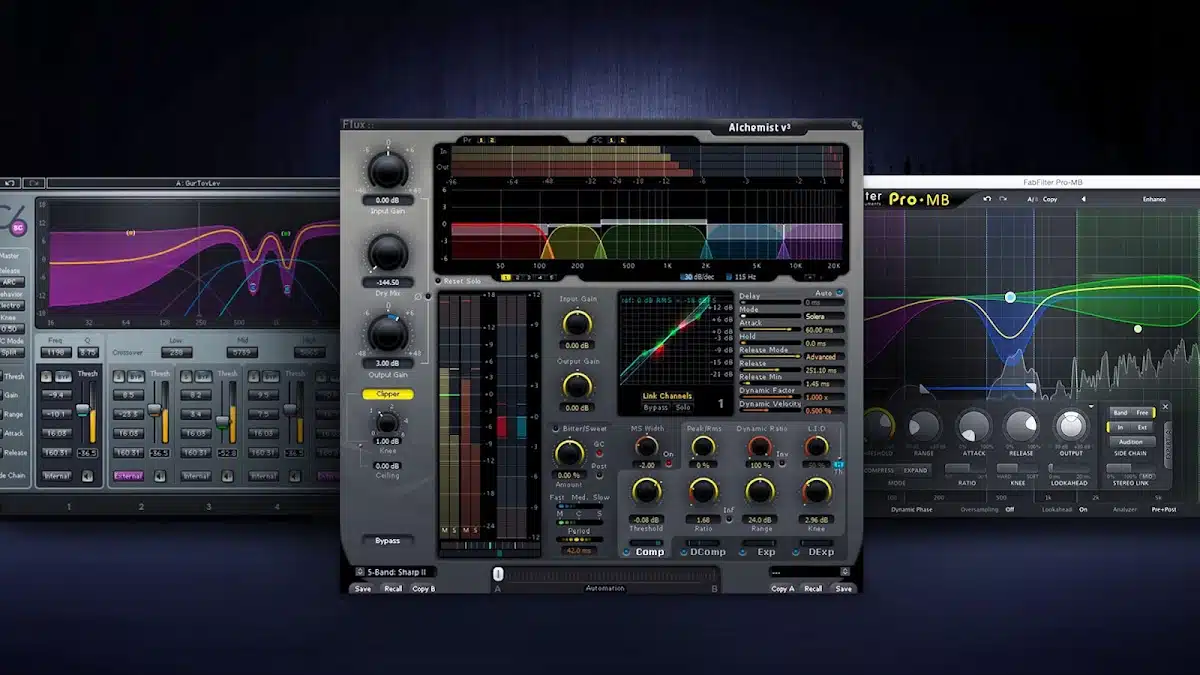
Multiband compression takes vocal compression a step further by dividing the vocal signal into separate frequency bands, each of which can be compressed independently.
This allows for precise dynamic control over specific parts of the frequency spectrum.
It ensures that the compression is applied exactly where it’s needed without affecting other areas.
For example, you might use multiband compression to tame harsh sibilance in the high frequency range without compressing the warm mid-range tones of the vocal (tone shaping).
It helps maintain clarity and balance across the entire frequency range.
By carefully adjusting the crossover points and compression settings for each band, you can address issues like a boomy low end or an overly bright top end.
Meaning, you’ll achieve a more polished and professional vocal sound.
Multiband compression is especially useful for complex vocal tracks that require detailed dynamic and tonal shaping to fit perfectly within the mix.
For example, applying light compression with a medium attack time on the mid frequencies can smooth out inconsistencies.
A faster attack on the high frequencies can control sibilance, which gives you a vocal that sounds both dynamic and consistent.
Aggressive Compression vs Subtle Compression (Edgy/Natural)
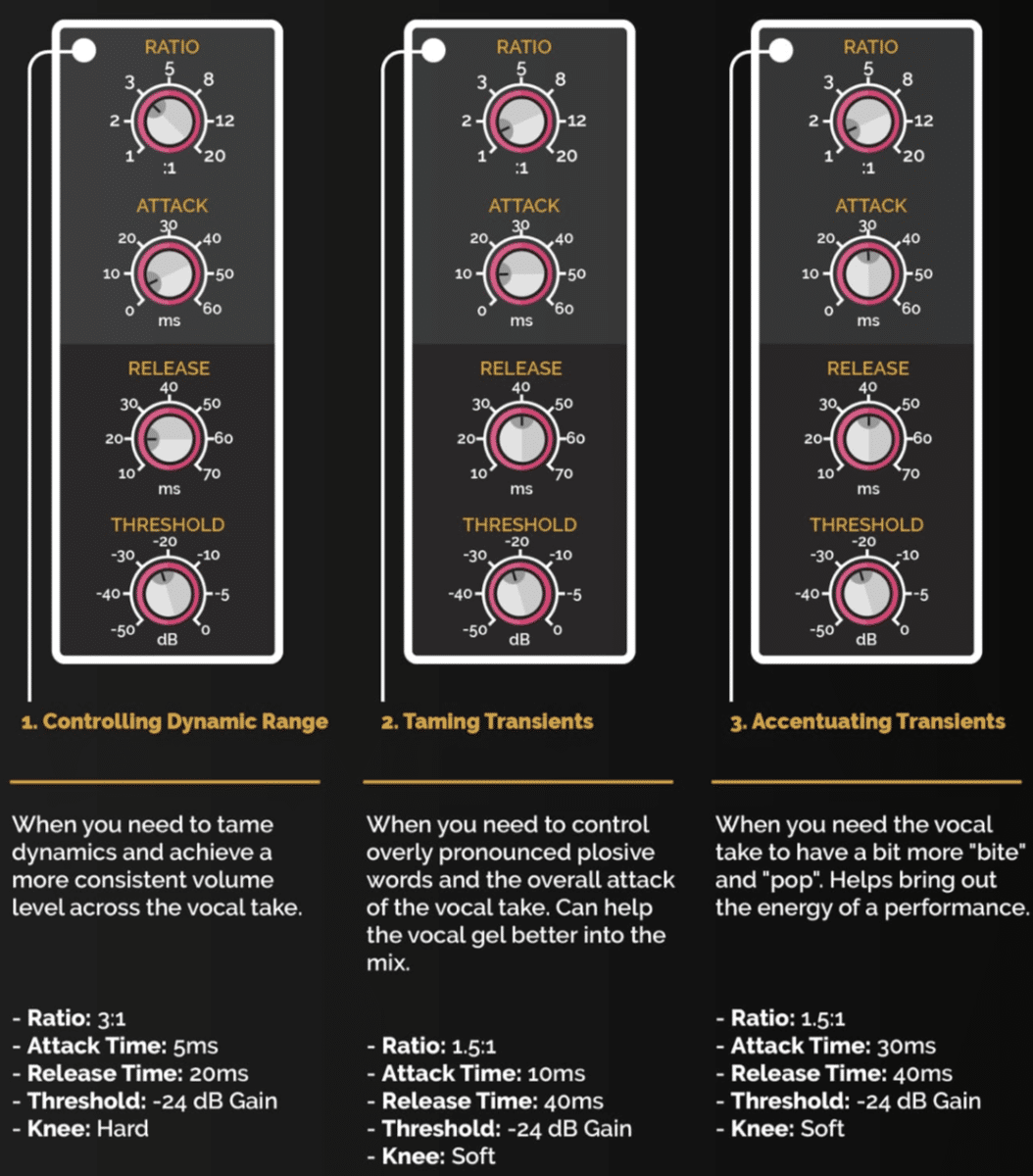
When you apply vocal compression, you can either go aggressive or subtle; each resulting in a very different outcome. Whether your compression process is just a starting point or the star of the show, this decision can make a world of difference.
-
Aggressive Compression
Aggressive compression can lend a sense of urgency and intensity to vocals, making them punch through the mix with undeniably force.
When you compress vocals like this, it’s especially ideal for metal or rock vocals or because they need to match the energy of the instruments with aggressive vocals.
It helps make sure your vocal hits the ear right, making it sound modern, cohesive, and perfectly balanced.
By using a fast attack time and a high ratio, you can significantly reduce the dynamic range 一 creating a vocal sound that grabs the listener’s attention.
For example, setting the attack time to 10ms and the ratio to 8:1 can transform a vocal performance into a powerful, in-your-face element of the track.
NOTE: t’s important to balance aggressive compression with the overall mix to avoid making the vocals sound loud, too squashed, or like they lost the natural elements of the performance.
So, needless to say, it won’t result in natural-sounding compression.
Using techniques like parallel compression or blending a bit of the uncompressed signal back in can help retain some of the original dynamics.
All while benefiting from the intensity that aggressive compression provides.
-
Subtle Compression for Natural Dynamics
On the other end of the spectrum, subtle compression can be used to carefully even out the dynamics of a vocal performance without altering its natural character.
When you compress vocals like this, it’s ideal for more conservative genres where the expressiveness and tiny details of the vocal are paramount.
A slow attack time (such as 30ms to 50ms) and a lower ratio (around 2:1) can apply just enough compression to smooth out the performance without making it sound overly processed or artificial.
You want to give the illusion of an unprocessed vocal with magic abilities.
By carefully setting the threshold to only engage on the louder passages, subtle compression ensures that the quieter details of the performance are preserved.
It will help enhance the overall expressiveness of the vocal.
Incorporating techniques like volume automation alongside subtle compression can further refine the dynamic balance of the vocal track.
For example, manually adjusting the volume of specific phrases or words that still protrude after compression can achieve a perfectly smooth vocal performance that feels both dynamic and naturally integrated into the mix.
This approach allows for precise control over the vocal dynamics, so every nuance of the performance is captured and conveyed to the listener.
Mixing Vocals 101
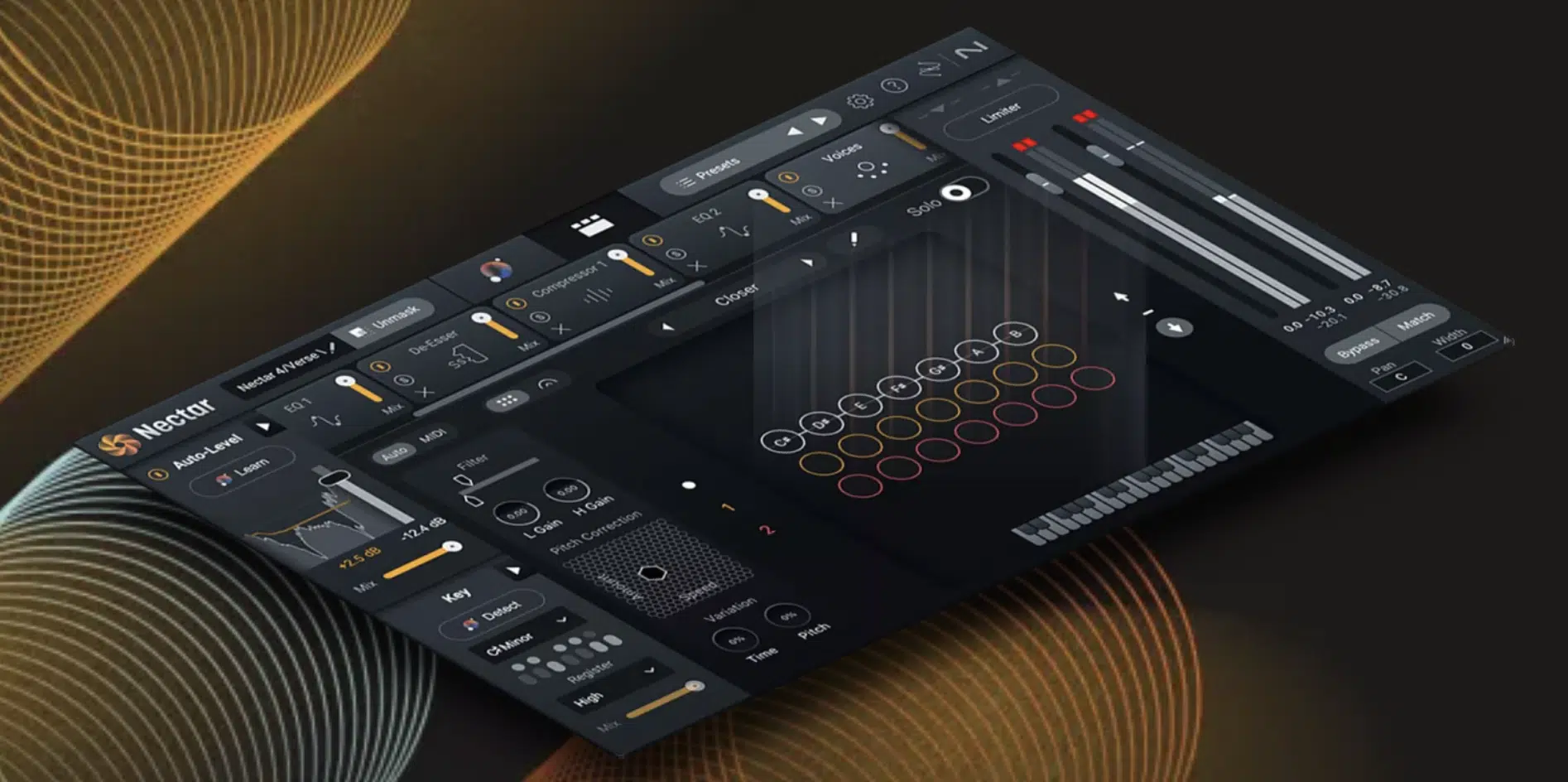
When you want to mix vocals, whether it’s a lead vocal, heavy vocals, subtle vocals, or whatever, there are a few things you should know.
When it comes to lead vocals, It’s important to apply compression in a way that maintains their prominence.
Plus, it ensures the backing vocals contribute to the track’s harmony and depth without overpowering anything.
This often involves:
- More aggressive compression on the backing vocals
- Higher ratios
- Faster attack times to tightly control their dynamic range
This will help you tightly control their dynamic range like a true professional.
For example, applying a 6:1 ratio with an attack time of 5ms to the backing vocals can keep them consistent in level.
It allows the lead vocal to shine through with less compression, perhaps using a 3:1 ratio and a slower attack time of 20ms.
The use of sidechain compression when you mix vocals can also be effective in this context, ducking the backing vocals slightly whenever the lead vocal is present.
This technique ensures that the lead vocal always remains in the foreground, with the backing vocals automatically reducing in volume to provide a supportive role.
It maintains vocal clarity and focus throughout the track with more dynamic consistency.
Therefore, it ensures that every word and note from the lead is heard clearly.
If you want to learn all about mixing vocals, in great detail, we’ve got you covered.
-
Volume Automation and Clip Gain for Consistency

In addition to you compressing vocals like a pro, volume automation and clip gain are invaluable tools for achieving a consistent vocal performance.
Volume automation allows for fine-tuned adjustments to the vocal track’s level throughout the song.
It compensates for any variations in performance intensity or microphone distance.
This can be particularly useful in bringing out key lyrical phrases or ensuring that quieter passages are heard clearly over the instrumentation.
Clip gain, on the other hand, adjusts the signal level before it hits any plugins, including compressors.
This can be useful for evening out the vocal performance before applying compression 一 leading to a more uniform application of the compressor’s same settings.
For instance, reducing the clip gain on particularly loud phrases can prevent the compressor from overreacting to these sections.
It results in a more natural and consistent vocal sound throughout the track.
Pro Tip: When you’re compressing vocals, using a reference track can be super beneficial, as a reference track can break it all down for your desired effect.
How To Apply Vocal Compression: Final Thoughts
Vocal compression is a delicate process that requires a fine balance between technical precision and creativity.
By knowing how to use it properly, you can ensure your vocals sit perfectly in the mix and convey the intended emotion and dynamics.
You’ll be able to achieve a professional polish that resonates with listeners.
The key to mastering vocal compression lies in understanding the tools and techniques at your disposal and applying them properly to enhance the vocal performance.
All without compromising its natural quality, of course.
To help you put these techniques and concepts into practice (and truly elevate your tracks) you should check out these legendary Free Vocals.
It includes 20 free vocal samples that will absolutely blow your mind.
These samples are your best bet for making your tracks catchy and adding the missing piece to your music.
They’re created in the same styles as the biggest hit songs in modern music 一 ensuring your tracks meet industry standards and blow your competition away.
Plus, they’re powerful, polished, perfectly processed, and crafted by the top producers and sound designers in the game.
By analyzing how these vocal samples were processed, you can see perfect vocal compression in action.
This hands-on experience provides invaluable insights into achieving a professional vocal sound, allowing you to apply these techniques to your own tracks.
Now, use the information you’ve learned here today and go create truly irresistible vocals, one compression setting at a time.
Until next time…







Leave a Reply
You must belogged in to post a comment.